With their striking appearance, white horses are undeniably beautiful creatures. They’re the stuff of fairy tales, and to some people, they can evoke images of magical stories of princesses, wizards and unicorns.
White-colored horses are not that uncommon, but true white horses are rare. But what’s the difference? And which breeds can be white? In this post, we answer questions like these and more as we give you a list of 12 white horse breeds.
What does “white” really mean?
Before we talk about the different breeds that can produce white horses, we need to take a step back and consider the question of what “white” actually means when referring to horses.
The answer to this might seem obvious – after all, a white horse is simply a horse with a white coat, right? Well, no. It’s not quite as simple as that.
True white horses are very rare, but horses that appear white – or more or less white – are far more common.
Horses that can properly be called white – as opposed to horses that merely appear white – have unpigmented pink skin and white hair. They are born this way and don’t change color as they age.
That said, some white horses may be born with some pigmentation, which they lose completely as they grow older.
Pink skin and white hair are the result of the lack of pigment cells – called melanocytes – in the skin, which is caused by genetic factors.
This means we can say that true white horses are genetically white while other horses may display a white or nearly white coat without genetically being a true white horse.
So what’s not white?
So how can horses that are not genetically white still display white-colored coats?
One type of white-looking horse is the “gray”, which is one of the most common types of horse coloring there is.
Gray horses usually start off another color, but, due to a certain gene being present, their coats turn gray as they age – and in some individuals, the coat may eventually become completely white.
However, grays can easily be distinguished from true whites – without the need for genetic testing – since they have dark rather than pink skin.
Furthermore, if you know that the horse was not white when it was born but became white later in life, you can also be sure that it isn’t a true white.
Another type of coat that can look white – or at least a cream color – is caused by dilution genes. These are genes that cause the pigmentation to be less pronounced rather than the lack of pigmentation altogether, so horses with dilution genes are not the same as white horses.
So in short, some horses may appear white, but this is just the appearance. Genetically, they aren’t white horses – even if they seem white to look at. Although if all you want is a horse that is white in color, this distinction might not be so important!
True white horses
So now we understand the difference between true white horses that are white genetically and horses that just look white, we can have a look at the different breeds that can produce true white horses.
1. Thoroughbred
The thoroughbred is one of the most famous breeds of racehorse that dates back to 17th and 18th century England. The breed was created when Arabian, Barb and Turkoman stallions were crossed with local mares.
They are now an extremely popular horse that is found around the world. Due to their speed, they are mostly used for racing, but they can also be used for other activities such as dressage and show jumping.
The most common colors for this breed are bay, dark bay, chestnut, black or gray, but true white is also possible – although it is very rare. In thoroughbreds, whiteness is caused by a dominant white gene that causes pink skin and white hair all over the body.
2. Arabian
Most white Arabian horses are not true whites. Rather, they are gray horses with coats that have faded to white – but beneath the white coat, they have dark skin, showing that they are not genetically white horses.
This makes sense since Arabian horses were bred on the Arabian Peninsula where the sun can be extremely powerful.
This would mean that horses with delicate pink skin prone to sunburn would be unlikely to survive, and any genes causing this would disappear through natural selection.
However, nowadays there is a very small number of white Arabians with pink skin, and it is thought they come from a single animal that carried a new type of dominant white gene that arose through mutation.
Either way, Arabian horses are handsome animals, and white individuals, whether true white or simply gray, can look all the more impressive.
3. American white
The American white is a color breed descended from a white stallion that was bred with Morgan mares, producing white offspring. Later, other white horses were also introduced to the line.
This breed was originally known as the “American albino” but since albinism doesn’t exist in horses, they were later renamed as American whites.
4. Camarillo
Camarillo is a true white horse with pink skin and a white coat all over its body. It is a rare breed and also relatively recent, only having been created in 1921.
The bloodline can be traced back to a Spanish mustang named Sultan who was owned by Adolfo Camarillo. This stallion was crossed with Morgan mares, creating a breed of white horses.
However, by 1991, only 11 of these horses remained, so action was required to save the breed.
A studbook was created, and blood from other breeds was introduced to reduce inbreeding. As a result, the breed survives, but not many people will ever be lucky enough to see one of these horses in the flesh.
5. American quarter horse
The American quarter horse is one of the fastest of all breeds of horse. It is best known for its prowess over the quarter-mile – hence the name – and it’s also found in rodeos, horse shows and ranch work. They are also a popular choice for all-round riding.
These horses come in a range of colors, with sorrel being most common, and other colors like black, bay and brown also exist. True white is possible too, although, as in other breeds, it is not a common color.
In American quarter horses, the white color is caused by the sabino 1 gene, a specific type of dominant white gene that can occur in several of the species that produce true whites.
When a horse has only one copy of the sabino 1 gene rather than two, it produces a distinctive spotted pattern on the coat rather than causing the whole coat to be white.
6. Tennessee walking horse
The Tennessee walking horse is famous for its unique four-beat running walk. It is an elegant animal with a calm demeanor, and these features make it a common sight in horse shows as well as a popular choice for recreational riding.
It comes in most colors, with the most common being black, bay and chestnut as well as several pinto colors. However, the breed also possesses the sabino 1 gene, so white Tennessee walking horses are possible although rare.
The breed also carries dilution genes, and diluted coat colors resembling white or off-white are far more common than true white.
7. Missouri fox trotter
The Missouri fox trotter takes its name from its distinctive ambling “foxtrot” gait. As you may guess, it originated in Missouri and is the result of the crossing of breeds including Arabians, Morgans, American saddlebreds, Tennessee walking horses and standardbreds.
The terrain of the region where the breed was created gave rise to a horse that is sure-footed and has good stamina, making it popular for activities such as trail riding where characteristics such as these are desirable.
They exist in all solid colors as well as pinto. White examples can occur due to the presence of the sabino 1 gene, but they are very rare.
8. Mustang
Mustangs are the free-roaming horses of North America that are descended from the horses the Spanish brought with them on their voyages across the Atlantic starting at the end of the 15th century.
Some of those animals escaped and subsequently populated areas of the US, and nowadays there are thought to be up to almost 100,000 of them living in the wild.
Other escaped horses have also bred with the mustangs, creating a breed of with a broad range of characteristics and existing in just about every color – including white, due to the presence of dominant white genes.
9. Shetland pony
The Shetland pony, a breed that originated in the Shetland Islands in the UK, carries the sabino 1 gene and can be born white.
It is a small yet strong and hardy animal with a pleasant temperament, which makes it a popular choice for younger riders. In the past, they were also used as pit ponies in coal mines in both the UK and the US.
10. Appaloosa
The appaloosa is an interesting case since this breed can produce animals that are almost completely white – but without it being due to the presence of a dominant white gene.
Rather, it is because of the leopard complex that gives more standard appaloosas their distinctive spotted pattern.
Appaloosas displaying a coat type known as “few-spot leopard” can appear almost completely white due to a combination of genetic factors.
These horses are born white and remain white for their whole lives, so they are not like grays that simply fade and turn white with age.
However, since the genetic causes are not the same as other true white horses, it is debatable whether appaloosas can be considered a true white horse – although since the result is the same, some people might not worry too much about what is responsible!
11. American paint horse
American paint horses aren’t usually completely white, but their distinctive markings are caused by white hair on pink skin, making them at least partly true whites.
Although they are best known for their patterned coats, these horses are considered a true breed rather than a color breed.
12. Azteca
The Azteca is a Mexican horse breed that was created by combining Andalusian, American quarter horse and Mexican criollo bloodlines. They are now also found in the US – American Aztecas also have American paint horse blood in their ancestry.
Although the most common color is gray, all other solid colors are possible – including white, due to the presence of the sabino 1 gene. However, as with other breeds, true white is rare – and white grays are far more common.
Problems with true white horses
Although they may look stunning, there are also several known health issues that white horses may suffer from.
One of the most common is that, due to their pink skin, they are prone to sunburn and so need to be protected from the sun’s rays.
Another problem with breeding white horses is what’s known as “lethal white syndrome”. This comes from the fact that some white dominant genes (although not all) are known to be lethal when homozygous.
In other words, if an embryo receives two copies of the dominant white gene, the intestines will not develop properly, and the foal will invariably only survive a couple of days after birth.
This is also one of the reasons why true white horses are so rare since if you mate two white horses with “lethal white” genes, their offspring will have a 25% chance of dying soon after birth.
Rare but wonderful animals
True white horses are a rare animal indeed, but they do exist – and they can be among the most striking and beautiful of all horses. However, not all breeds can produce true whites, and even in those that can, the color just doesn’t occur that often.
In this post, we have talked about horses that can be considered true whites, and if that’s what you want, these are some of the breeds to look at. However, if you just want a horse with a white color, there are other possibilities – such as white grays – that also look just the same.
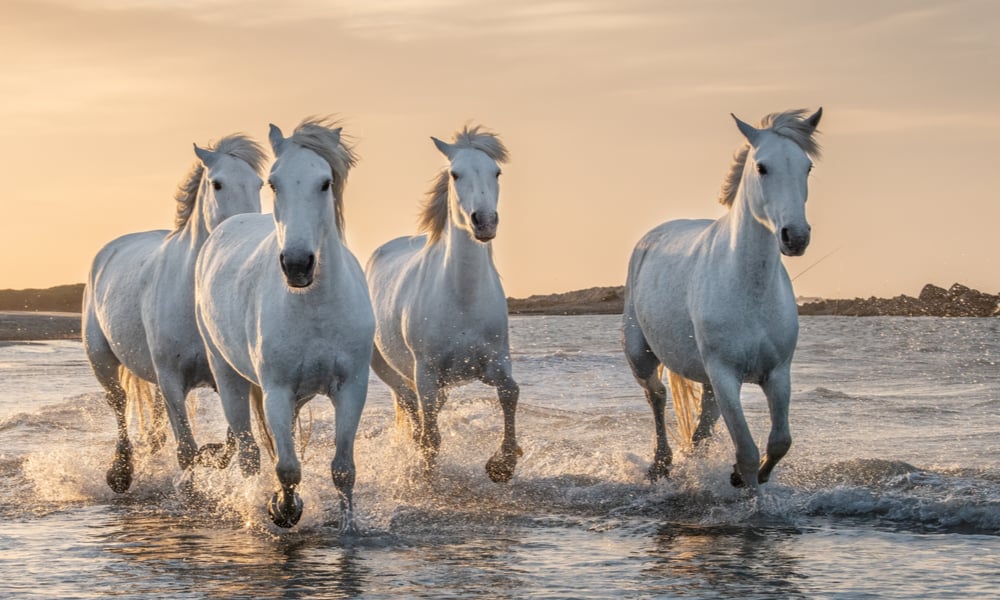
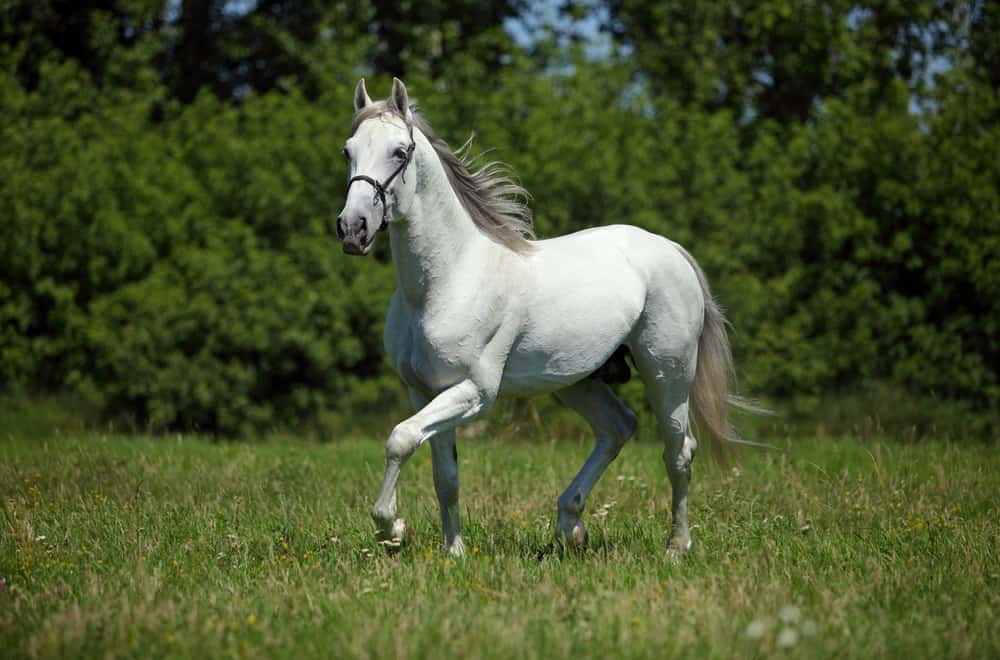
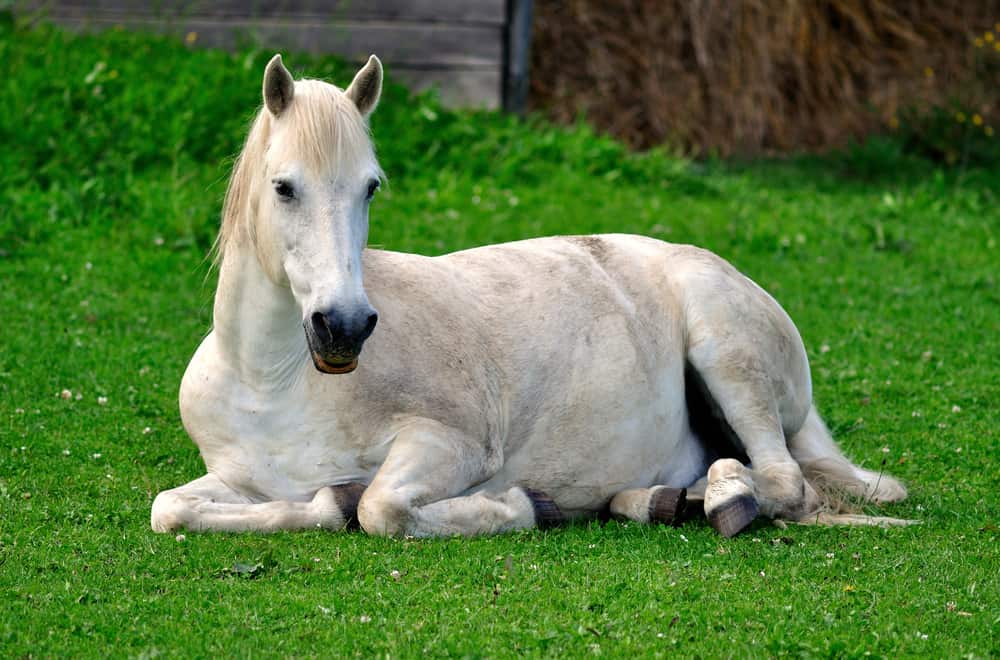
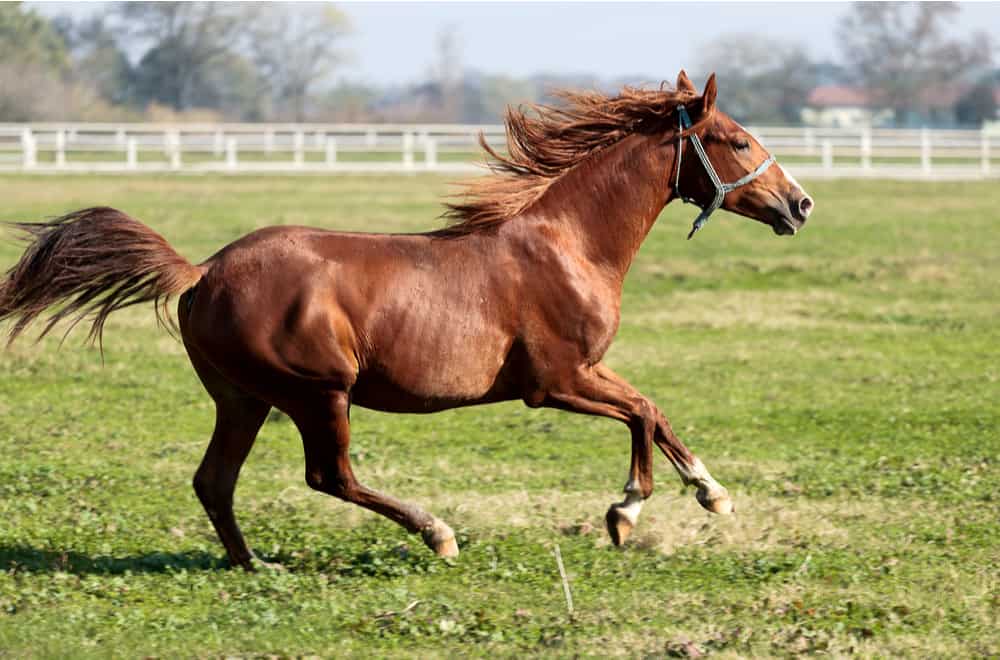
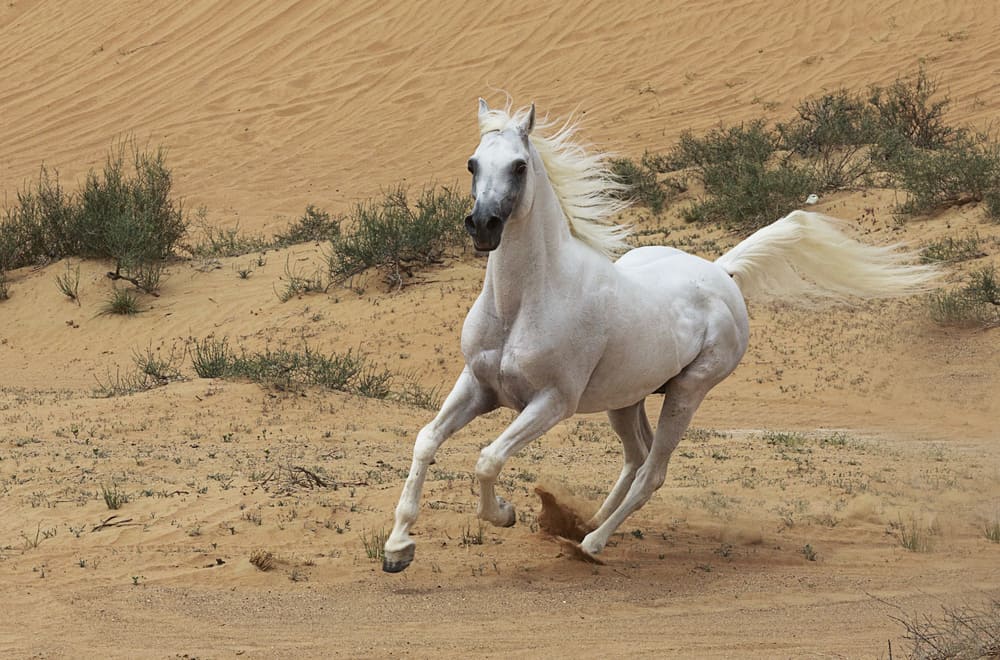
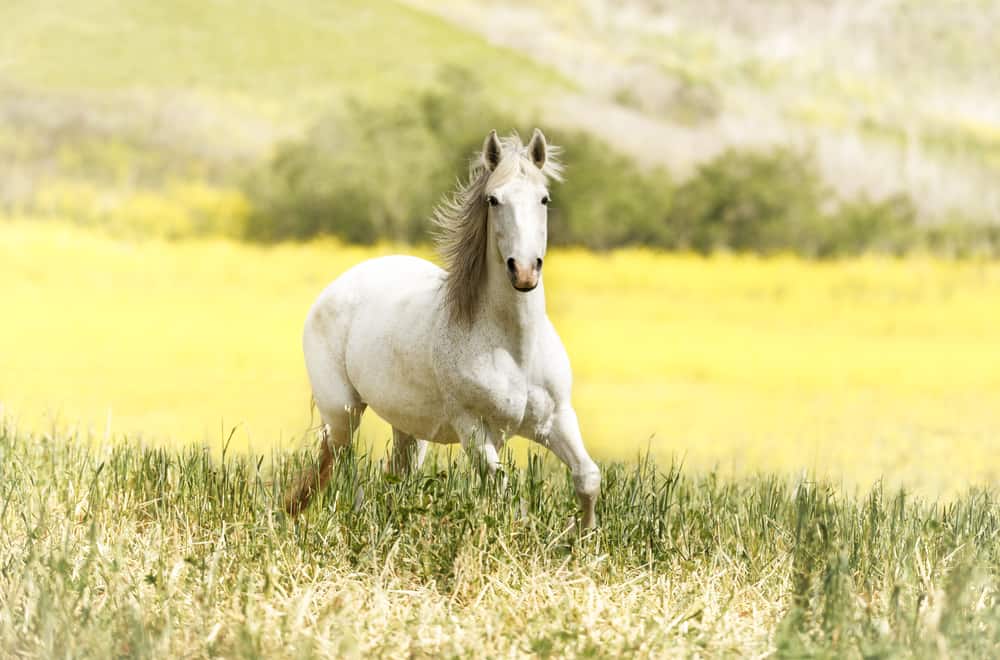
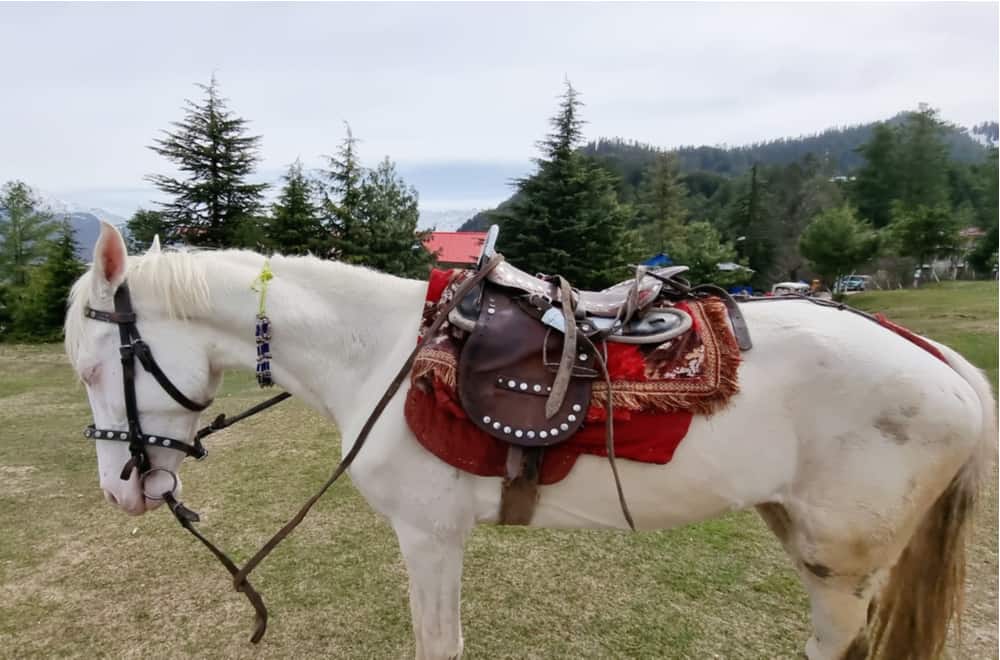
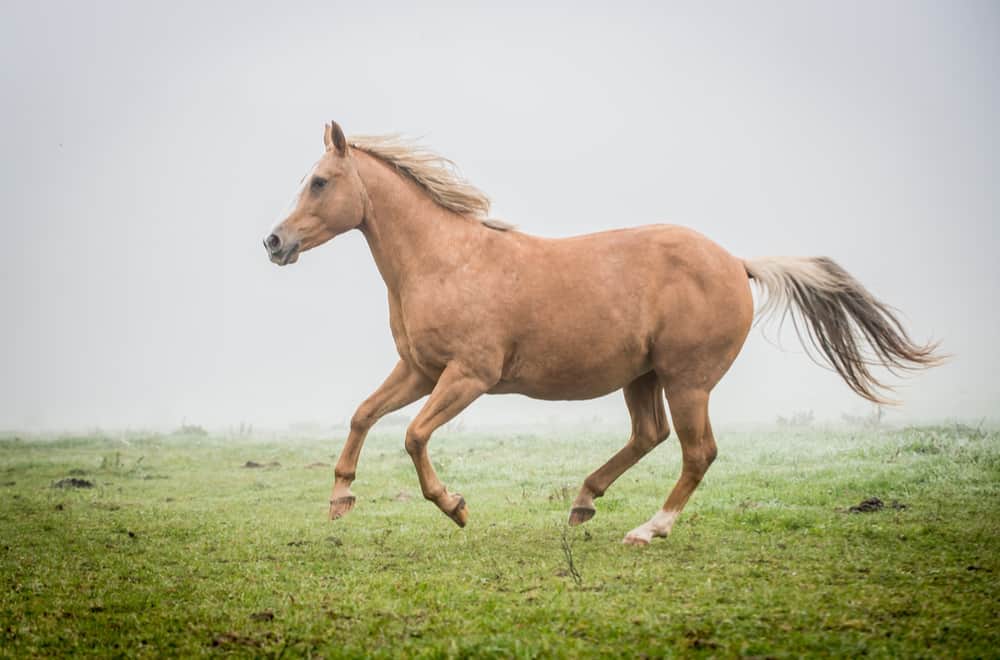
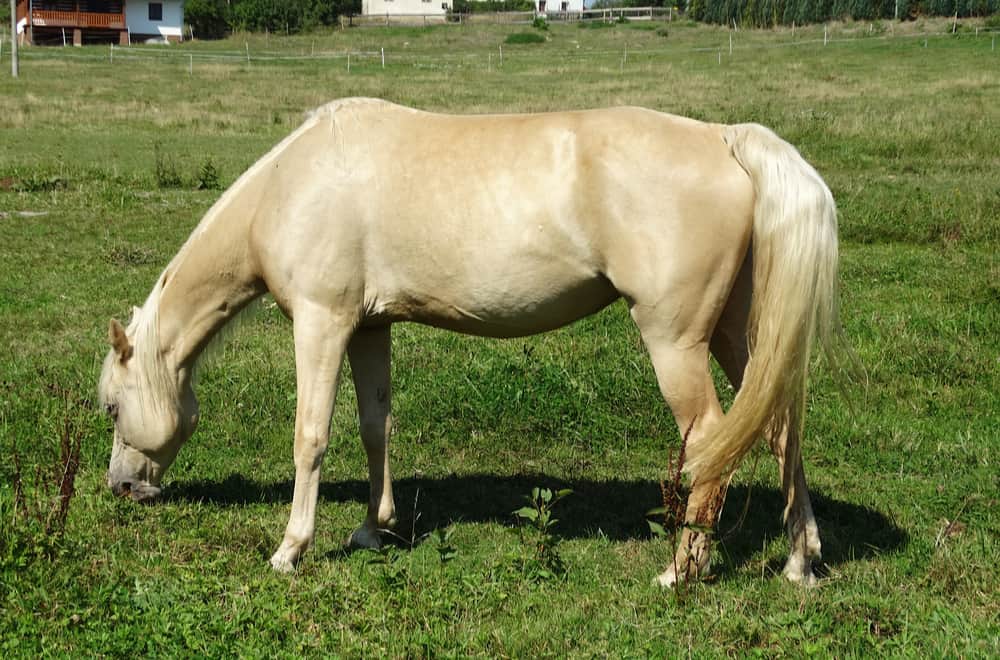
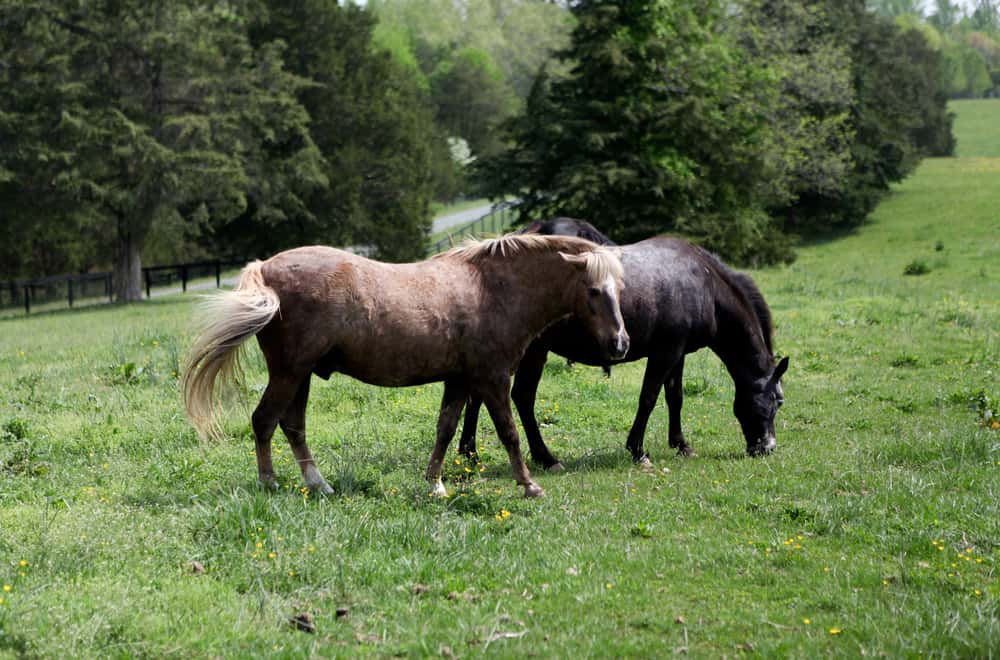
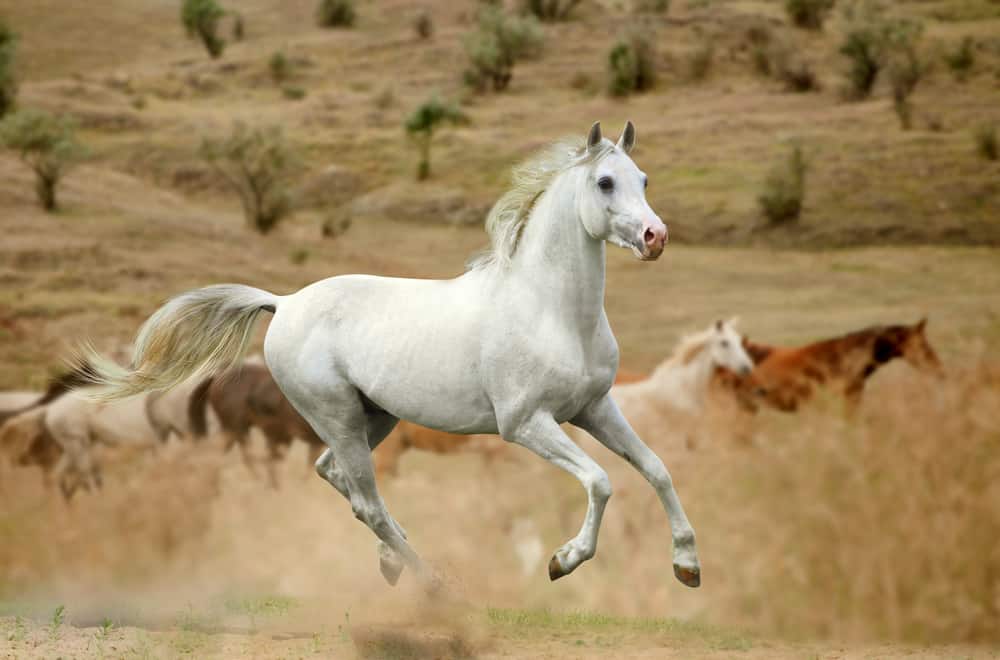
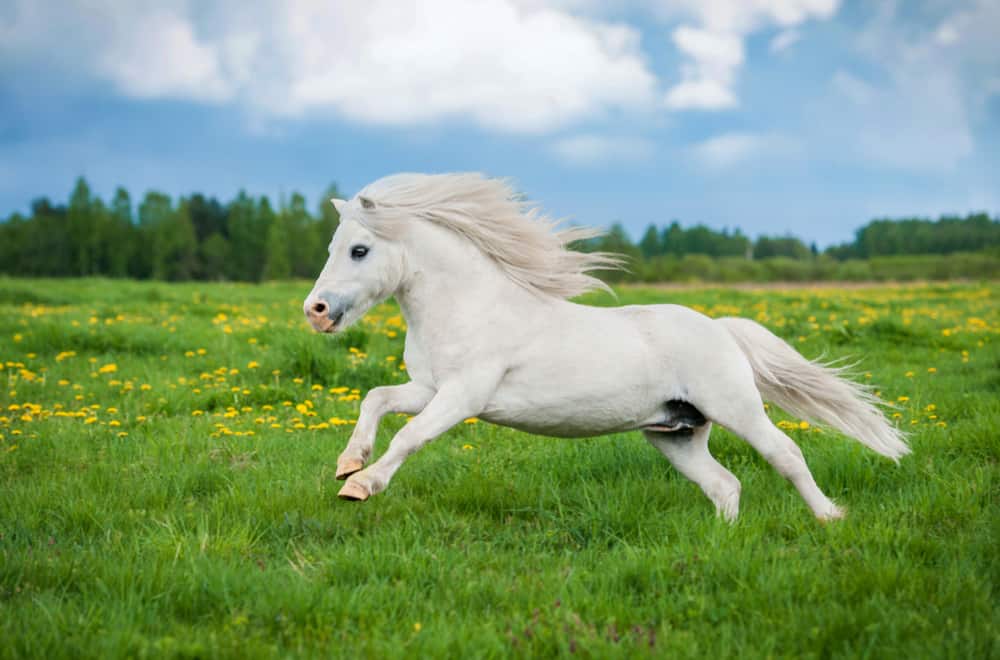
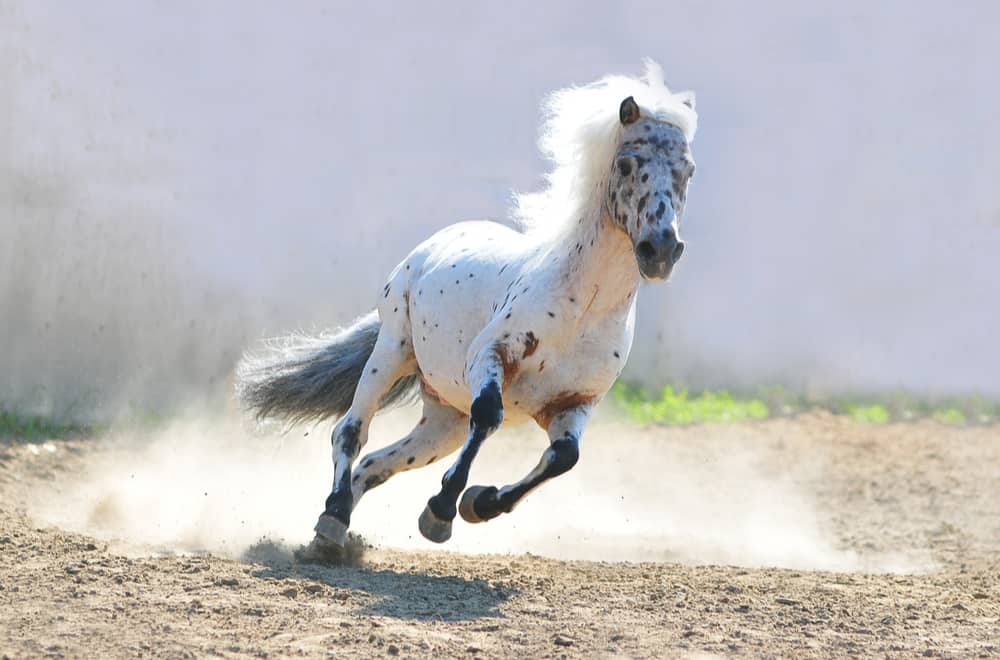
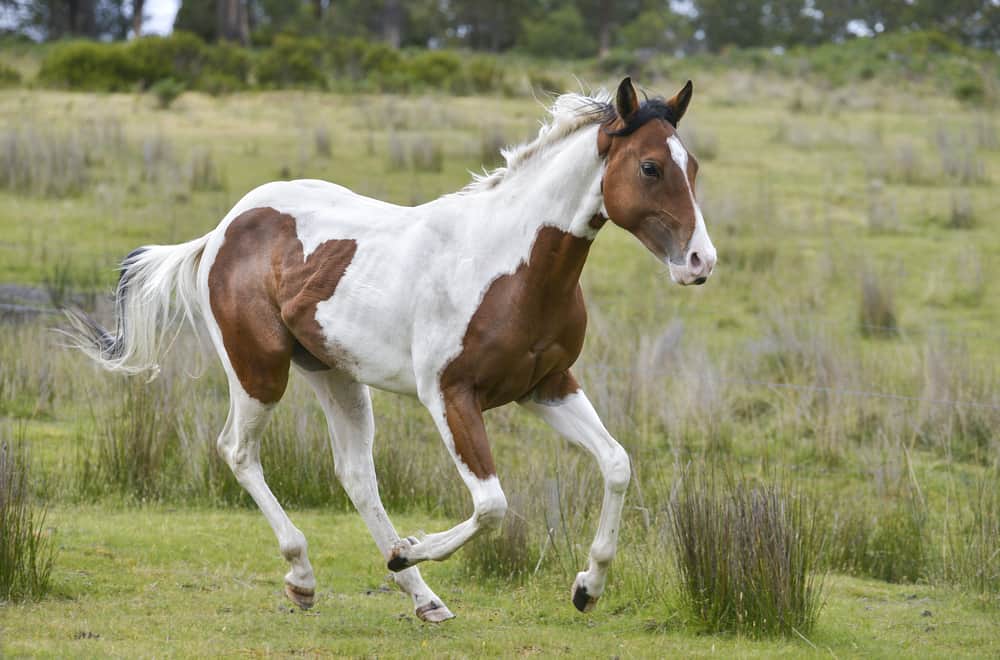
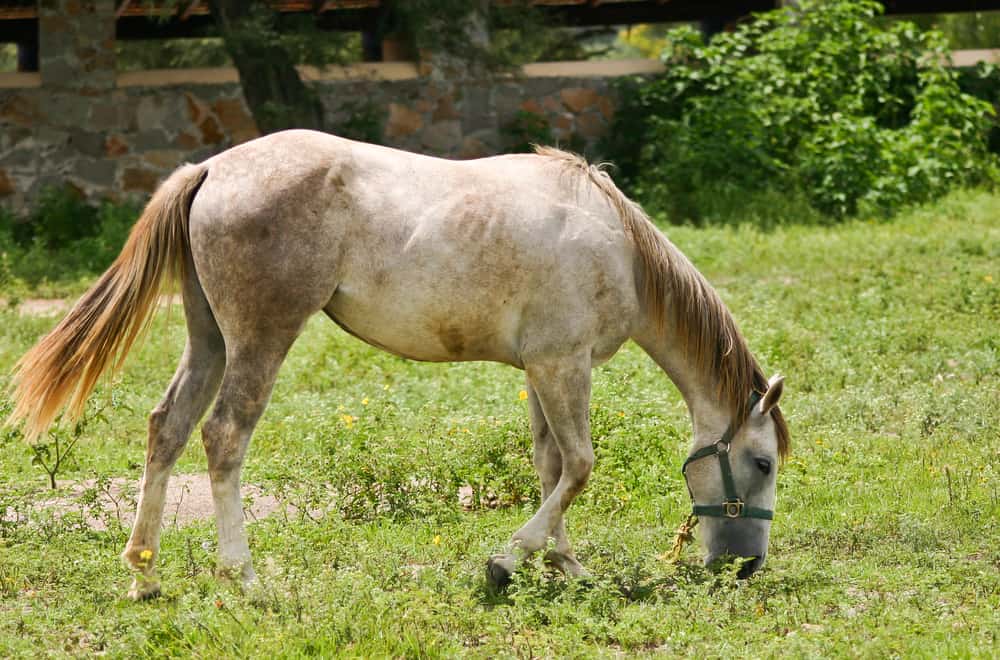







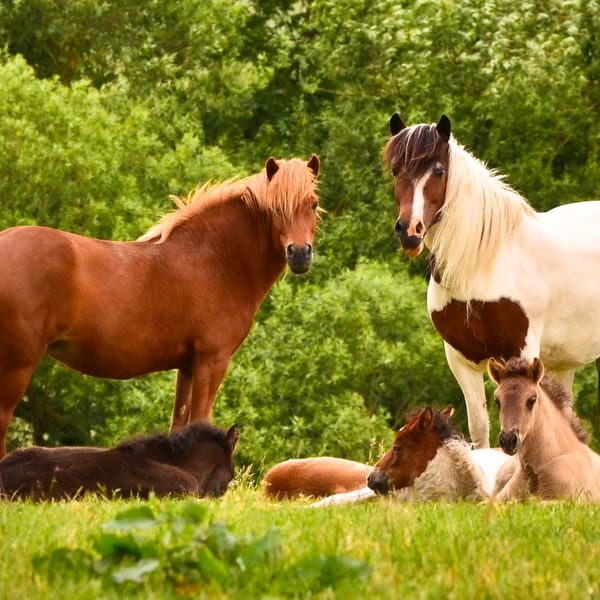
Are they easy to nourish and the cost of raising them is expensive?
look at these horses so strong and mighty, I wish to see them once in real life
Me too. I’d love to be able to own a few horses!